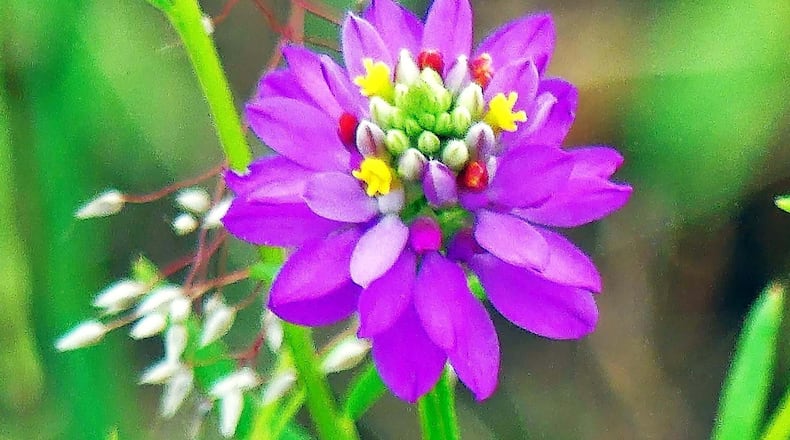Georgia is home to some 3,500 species of native flowering plants that include trees, shrubs, wildflowers, vines, grasses and others — a natural richness that helps make Georgia the fifth most biologically diverse state in the union.
There is, then, a lot to see and enjoy in the state. And to do this best, one must take a walk in the woodlands, grasslands, wetlands, mountain slopes, streamsides or other natural environments where wildflowers and other plants prefer to live.
Fortunately, Georgia has numerous such places accessible to the public — state, county and national parks, wildlife refuges, nature centers and nature preserves — in which an amazing array of native wildflowers can be found throughout the year. (Most of the places are open to the public during the COVID-19 pandemic.) And one of the best times of the year for a wildflower walk is now through June, when scores of native plants are blooming or in near-bloom and attracting hordes of bees, butterflies and other pollinators.
If you’re trying to decide where to go, a good guide is the book “Favorite Wildflower Walks in Georgia” by Hugh and Carol Nourse. It features walks in 20 public natural areas known for exceptional wildflower displays, and describes the blooms you’re likely to encounter on each walk throughout the year.
We visited one of those places last week, the Rock and Shoals Natural Area, a granitic rock outcrop near Athens in Clarke County — “a flatrock, not a dome,” as the Nourses describe the preserve. As such, it is home to several wildflowers that favor such an unusual habitat. During our two-hour walk, for instance, we found the purple-flowered flatrock phacelia and the delicate blue-and-white flatrock pimpernel, which reminds me of Delft porcelain.
Perhaps the most breathtaking wildflower of all, however, was the Curtiss’ milkwort, with deep pink petals and a center containing nearly every color of the rainbow.
IN THE SKY: From David Dundee, Tellus Science Museum astronomer: The moon will be full next Friday — the Strawberry Moon, as it’s sometimes called. Venus is low in the west at dusk and sets less than an hour later. Mars rises in the east four hours before sunrise. Jupiter and Saturn rise in the east around midnight.
About the Author
Keep Reading
The Latest
Featured


